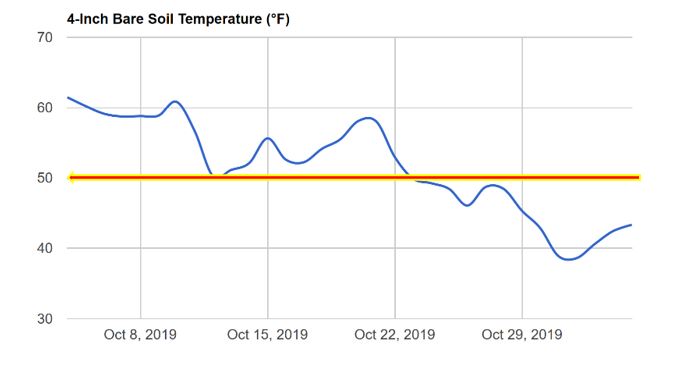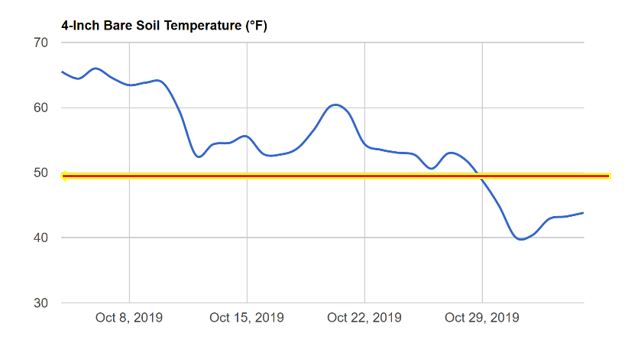ILSOYADVISOR POST
Soil Temperature: Is It Just Another Number?
Soils are a geological work of art that have a strong interaction with the environment and regional challenges. Some people may see soils as just “dirt,” but to the agriculture community it’s much more than that. Soils are home to countless microbes, provide storage capacity for crop nutrients and structure for growing crops.

It’s important to understand the amazing value that soils provide to better understand how to manage and protect them. Like many things in life, soils also go through a seasonal change based on the environment – rain and temperatures.
As you can see in Chart 1, a given soil in Springfield, Illinois, has experienced a cooling trend (fall), a cold trend (winter) a warming trend (spring/summer), and finally another cooling trend (fall). All these trends will correlate with the ever-changing air temperatures. However, soils do have the ability to insulate the ground, to a point, and can “warm up” based on sunlight exposure and average daytime/nighttime temperatures.
From an agronomic standpoint, these trends can help one understand the risk of certain products or management practices for the coming crop. It’s understood that a seed needs moisture and accumulated heat from the soil to germinate (50o+). Therefore, very little activity is taking place when the soils are cool. The biological part of the soil system becomes less active during cooling trends and cold trends. These activities would include the bacteria responsible for converting ammonium nitrogen (non-mobile) into nitrate nitrogen (mobile). Consequently, it’s important to monitor soil temperatures when applying nitrogen-based fertilizers. This information can be valuable not only in the fall, but also in the spring.
The Illinois State Water Survey (ISWS) has a great tool that is free to track and monitor regional soil temperatures. This information can be used to help make management decisions or as an investigation tool. Below are three examples from Monmouth, Springfield and Rend Lake areas showing their soil temperature trends. Note the yellow line indicates roughly 50 degrees. As you can see from the three charts—north, central and south—soil temperatures are influenced based on their location. Soils in the south tend to warm up sooner in the spring and can be more vulnerable to nitrogen concerns. Soils in central and northern Illinois are recommended to apply nitrogen once soils have cooled below 50 degrees.
For more details on tracking current Illinois soil temperatures and to research historical data click here.
Monmouth, Illinois
Springfield, Illinois
Rend Lake, Illinois








Comments
Add new comment